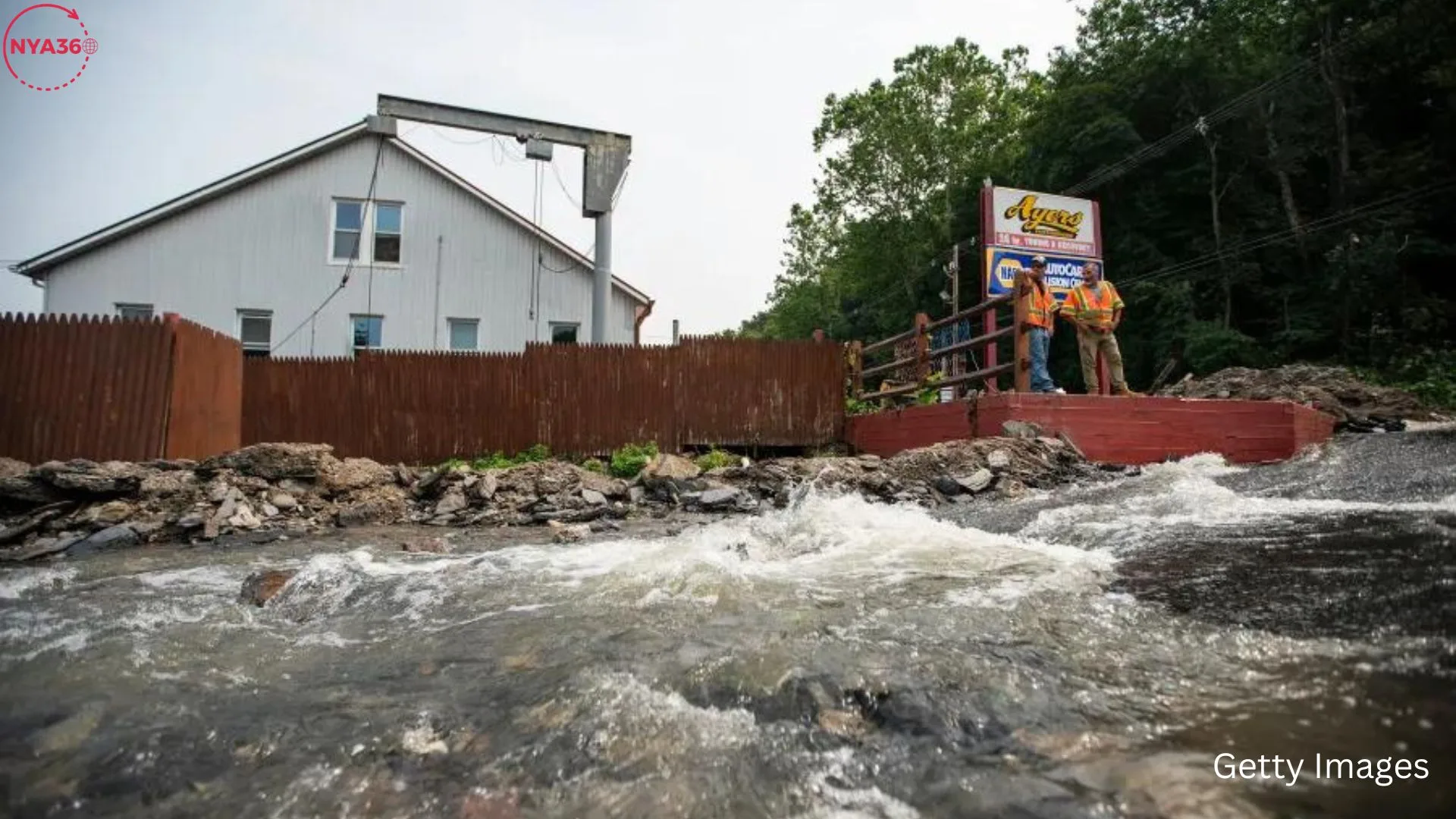The severe flooding in Jackson, New Hampshire exemplifies a natural phenomenon that causes rapid disorder, resulting in extensive destruction and posing instant dangers to both people and infrastructure. Rampant inundations frequently arise from an excessive influx of water that surpasses the carrying capacity of natural or artificial waterways, such as rivers, streams, and drainage networks. In the instance of Jackson, the flooding was most likely caused by a combination of causes such as intense and prolonged precipitation, rapid melting of snow, or the convergence of water from many origins, resulting in a sudden rise in water levels.
The formidable nature of torrential floods is seen in their capacity to rapidly overpower anything in their trajectory. The swift increase in water levels can result in the erosion of riverbanks and embankments, leading to the inundation of residential areas, roadways, and low-lying regions with a powerful flow of water. The powerful flooding has the potential to displace trees, vehicles, and debris, transforming them into hazardous projectiles, intensifying the damage and putting lives at risk.
The effect of severe floods on infrastructure is significant. Highways, bridges, and structures can sustain significant damage or be entirely swept away. The hydraulic force can gradually wear away the soil and weaken the structural foundations, ultimately resulting in their complete failure. Not only does this cause disruptions in transportation networks, but it also puts the safety of the impacted areas at risk.
Communities grappling with severe floods are confronted with imminent dangers to their lives and well-being. The swift current of the water can present a substantial hazard to individuals who are trapped in its trajectory, resulting in injuries, deaths, and the forced relocation of occupants from their residences. Emergency response personnel encounter significant obstacles in their efforts to reach and evacuate affected individuals as a result of the rapid and hazardous characteristics of the floods.
Moreover, the devastating power of violent floods goes beyond the immediate damage to infrastructure and the human population. The environmental consequences encompass the devastation of habitats, pollution of water sources, and disturbance of ecosystems. Flooding has the capacity to displace trees, induce soil erosion, and transport pollutants, debris, and toxic substances, resulting in ecological imbalances and possible lasting harm to the natural environment.
JUST IN: Major flood waters ravish the countryside in Jackson, New Hampshire after heavy winds and unprecedented rain.. pic.twitter.com/TmTkTkRwud
— Chuck Callesto (@ChuckCallesto) December 19, 2023
Following a catastrophic event, the primary focus is on promptly conducting search and rescue missions to safeguard the well-being of persons who are trapped or stranded due to the flooding. Priority must be given to evacuation operations, the establishment of emergency shelters, and the provision of medical assistance in order to minimize the impact on human lives. Simultaneously, endeavors to evaluate the magnitude of harm to infrastructure and initiate the process of cleaning up and restoring commence.
The aftermath of an intense flood requires a synchronized and collaborative response from multiple parties, such as local authorities, emergency services, volunteers, and relief organizations. The emphasis transitions from quick reaction to enduring recuperation, encompassing the reconstruction of infrastructure, offering assistance to impacted communities, and executing strategies to avert or alleviate comparable calamities in the future.
To effectively deal with the consequences of such devastating flooding, it is necessary to provide immediate assistance and also implement long-term measures to improve the ability to withstand, prepare for, and reduce the effects of future catastrophes, in order to safeguard lives, assets, and the natural surroundings.
Follow us on social media: Instagram, Threads & Twitter X @nya360_ YouTube & Facebook @nya360.





